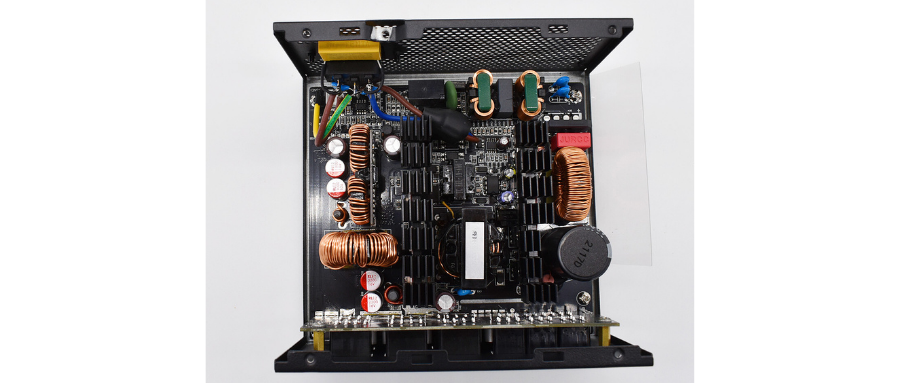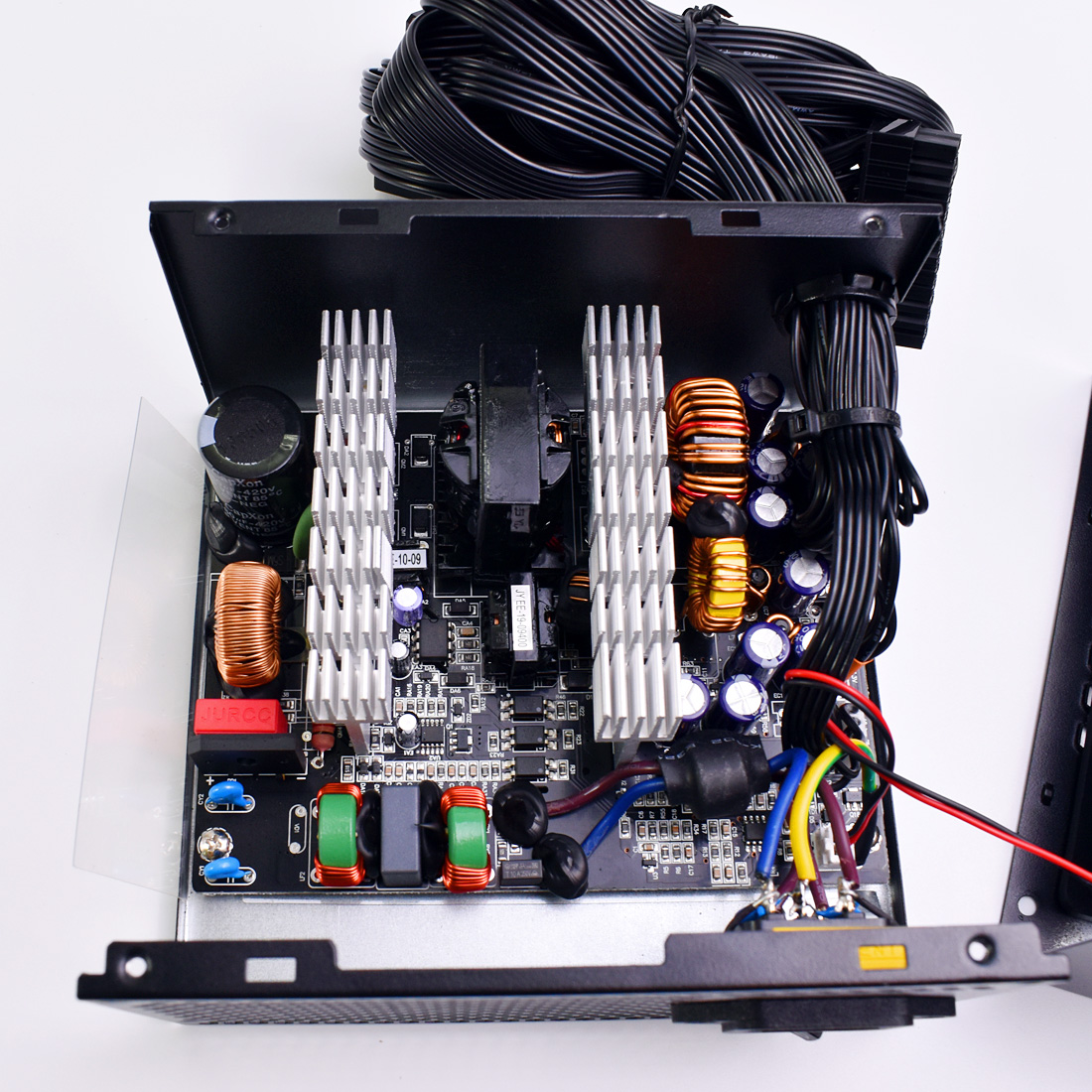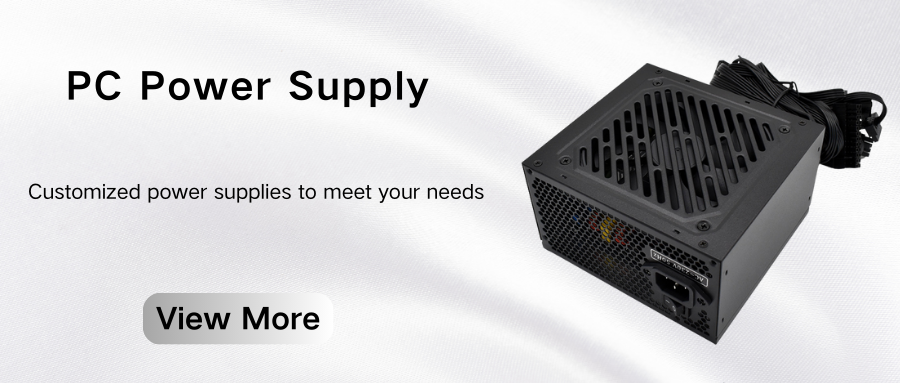PC power supply is a device that is specially used to supply power to the accessories inside the chassis, such as motherboards, drives, graphics cards, etc. Currently, most PC power supplies are switching power supplies. The following is a detailed introduction to PC power supply:
Power supply principle: Convert 220V AC power into DC power and transmit it to each component separately. It is the hub for powering various components of the computer. Its performance and quality are directly related to the stability and reliability of the computer.

Power supply classification
PC/XT power supply: The standard set by IBM when it first launched the personal PC/XT machine.
AT power supply: It is also a standard proposed by IBM when it launched the PC/AT machine in the early days. At that time, it could provide 192W of power supply.
ATX power supply: The ATX specification is an industrial standard proposed by Intel in 1995. Today, the ATX architecture power supply has become the mainstream standard in the industry. ATX is the abbreviation of AT Extend in English, which can be translated as the "AT extension" standard, and the ATX power supply is designed according to this specification. The home computer power supplies currently sold on the market generally follow the ATX specification, with a standard size of 150x140x86mm.
BTX power supply: BTX (Balanced Technology Extended) power supply is a PC power supply designed in accordance with the BTX standard. It can be understood as a workaround by Intel for the convenience of branded machine manufacturers. BTX power supply is compatible with ATX technology. Its working principle and internal structure are basically the same as ATX. The output standard is the same as the current ATX12V 2.0 specification. The power supply output requirements and interfaces support ATX12V, SFX12V, CFX12V and LFX12V. Although this power supply is technically unchanged from the previous power supply, it adopts an irregular appearance to meet the size requirements. Currently, three specifications of 220W, 240W and 275W are defined. Among them, the 275W power supply adopts independent dual-channel +12V output. BTX is not an innovative power supply standard compared to ATX.

EPS power supply: EPS power supply and emergency power supply system (UPS) are completely different concepts. Since 2002, with the development of the digital age, the SSI EPS standard for powering new workstations and server chassis has emerged. The ATX power supply standard ATX2.03 stipulates that the motherboard power supply is 20pin and the CPU power supply is 4pin, while the EPS is characterized by a motherboard power supply of 24pin and a CPU power supply of 8pin. Therefore, the ATX power supply with a 20+4pin motherboard power supply and a 4+4pin CPU power supply that is often seen now is actually an extension of the ATX power supply, and the correct name should be "ATX/EPS". The CPU power supply of the popular home computer motherboard often has an 8pin interface, and the 4pin on the ordinary ATX power supply can fully meet its power consumption (4pin is left). The 8pin interface on the ATX power supply appears because Intel's Xeon series CPU is required to have an 8pin power supply - the current power consumption of ordinary CPUs has reached more than 70W, so the server dual CPU will exceed 140W, and if converted to 12V, it will be more than 12A. The four thin wires of 4pin will obviously make the power supply of the motherboard unstable, and this will also cause safety hazards. The same is true for ATX's 20pin. Considering the development in the distant future, motherboard manufacturers first launched 24pin motherboards on ordinary home motherboards, and then 8pin interfaces appeared on ATX single CPUs, which are fully compatible with the EPS standard. It is completely possible to use a standard ATX power supply for such a motherboard, but for safety reasons, it is best to connect all the wires.
WTX power supply: WTX power supply (Workstation STX) is a workstation power supply, which is between servers and home computers. It can also be understood as an enhanced version of ATX power supply. At that time, the standard was proposed due to the emergence of Pentium III Xeon (slot2). It is larger in size than ATX power supply and has stronger power supply capacity than ATX power supply. It is often used in servers and large computers. WTX power supply belongs to one of the architectures of IA server power supply.
SFX, CFX, LFX power supply: SFX power supply, CFX power supply, and LFX power supply are the same as WTX power supply. They can all be said to be variants of ATX. They all have their own specifications in size and power. They are compatible with the current ATX series motherboards like BTX power supply. These power supplies are designed to meet the needs of small chassis without independent graphics cards and small size, so as to facilitate the selection of different chassis and other accessories when assembling computers. CFX12V is suitable for chassis with a total system capacity of 10-15 liters; LFX12V is suitable for chassis with a system capacity of 6-9 liters, and currently has two specifications of 180W and 200W; SFX power supply size is 125x100x63.5mm.
For power supplies with different positioning, the number of its output wires is different, but they are inseparable from 9 colors, namely yellow, red, orange, purple, blue, white, gray, green, and black. A sound PC power supply has these 9 colors of wires (currently mainstream power supplies have omitted white wires). The functions of each color wire are as follows:
Yellow: There are more lines, +12V has always provided power for the spindle motor and seek motor of hard disks, optical drives, and floppy drives, and provided working voltage for ISA slots and circuit logic signal levels for serial port devices. When the +12V voltage output is abnormal, the reading performance of the hard disk, optical drive, and floppy drive will often be unstable. When the voltage is low, the optical drive will pick up the disk seriously, the logical bad sectors of the hard disk will increase, bad sectors will often appear, the system will easily freeze, and it will not be able to be used normally; when it is high, the speed of the optical drive is too high, it is easy to lose control, and it is easy to explode the disk, and the hard disk will stall and spin. At present, if the +12V power supply is short, it will directly affect the performance of the PCI-E graphics card and the CPU, directly causing a freeze.
Blue: The -12V voltage provides the logic judgment level for the serial port, and the current required is not large, generally below 1A. Even if the voltage deviation is too large, it will not cause a fault, because the 0 level of the logic level ranges from -3V to -15V, which has a wide range.

Red: The number of +5V wires is equivalent to that of the yellow wires. The +5V power supply is the working voltage provided to the CPU and integrated circuits such as PCI, AGP, and ISA, and is the main working power supply in the computer. At present, the CPU uses a mixed power supply of +12V and +5V, and the requirements for it are not as high as before. It is just that the latest Intel ATX12V 2.2 version has strengthened the power supply capacity of +5V and strengthened the power supply of dual-core CPU. The quality of its power supply is directly related to the system stability of the computer.
White: There are very few power supplies with white wires on the market. White -5V also provides judgment levels for logic circuits. It requires very little current and generally does not affect the normal operation of the system. It is basically dispensable.
Orange: This is specially set up for ATX power supply to provide power for memory. In the latest 24pin main interface power supply, the +3.3V power supply is emphasized. This voltage has strict requirements, stable output, small ripple coefficient, large output current, and more than 20 amperes. For safety, some mid-to-high-end motherboards use high-power field tubes to control the power supply of memory, but this tube may be burned due to the reverse insertion of memory. Platforms using +2.5V DDR memory and +1.8V DDR2 memory have voltage conversion circuits installed on the motherboard.
Purple: +5VSB (+5V standby power) (standard range: +4.75-+5.25), ATX power supply provides +5V 720mA power to the motherboard through pin9. This power supply provides power for WOL (Wake-up On LAN) and power-on circuits, USB interfaces and other circuits. If you do not use network wake-up and other functions, you can turn off such functions and remove the jumper to prevent these devices from drawing current from the +5VSB power supply. The power supply quality of this output directly affects the power consumption of the computer when it is in standby mode, and is directly linked to the electricity bill.
Green: Control the power on by level. When the signal level of this port is greater than 1.8V, the main power is off; if the signal level is lower than 1.8V, the main power is on. Use a multimeter to test the output signal level of this pin, which is generally around 4V. Because the voltage output by this pin is the signal level. Here is a preliminary method to judge whether the power supply is good or bad: use a metal wire to short-circuit the green port and any black port. If the power supply does not respond, it means that the power supply is damaged. Many power supplies now have protection circuits. After short-circuiting the power supply, it will automatically shut down if there is no additional load. Therefore, it is necessary to carefully observe the power supply startup in an instant.
Gray: During the startup and shutdown process of the ATX power supply, when the motherboard sends the PS_ON startup signal to the power supply, the power supply will wait until all its output voltages are stable before sending a safety signal to the motherboard. The motherboard will start the real startup process based on this safety signal. This safety signal is usually called Power Good (PG for short). It is not easy to generate a PG signal. The ATX power supply is required to send a PG signal to the PG end of the motherboard between 100-500ms after the output voltage stabilizes.

Importance
One of the problems that is difficult to find in a PC is insufficient power. The symptoms may be that the motherboard is "unusable" and the software causes frequent system crashes. These symptoms may be manifested by abnormalities in the motherboard, CPU or memory, and sometimes even seem to be problems with the hard disk, CDROM, floppy disk, etc. Imagine: the power supply of each component in the PC system has the same source of power - that is the power supply. The power supply must provide stable and continuous current to all devices without interruption. If the power supply is excessive or insufficient, the connected devices may not function properly and appear to be broken. For example, the memory cannot be refreshed, resulting in data loss (leading to software errors); the CPU may be deadlocked or randomly restarted; the hard disk may not rotate, or even more strangely - it rotates but cannot process control signals normally. Since so many devices are closely related to the power supply, it is not an exaggeration to regard the power supply as the most important component in the PC hardware system.
Purchase points
Power: Calculate the required power according to the computer configuration, and generally leave a certain margin. It can be estimated through the power calculator or empirical formula provided by the manufacturer (such as CPU power consumption + graphics card power consumption + other hardware power consumption + a certain margin). For example, for a high-configuration gaming computer, if the CPU power consumption is 150W, the graphics card power consumption is 300W, and the other hardware power consumption is 100W, leaving a 200W margin, then it is more appropriate to choose a power supply of about 650W.
80Plus certification: reflects the power conversion efficiency. The higher the level, the higher the efficiency. Common ones include white, bronze, silver, gold, platinum, and titanium. High-grade certified power supplies generate less heat and are more energy-efficient. Long-term use can save electricity bills. For example, gold-certified power supplies have higher conversion efficiency under different loads, which can reduce energy waste.
Module type: divided into full-module, semi-module and non-module. All output interfaces of the full-module can be freely plugged and combined, and the interface solution can be customized according to needs, which is convenient for wiring and the inside of the chassis is neater. It is suitable for users who pursue personalization and high requirements; some interfaces of the semi-module are fixed and some are pluggable; all power cords and ports of the non-module are connected to the main body and cannot be disassembled. The price is relatively cheap, but the wiring is more troublesome, which is suitable for users who do not require high cleanliness inside the chassis.
Brand and quality: Choosing a well-known brand is more guaranteed. You can learn about it by checking product reviews, evaluations and word of mouth. High-quality power supplies are finely crafted and made of solid materials. For example, the use of high-quality capacitors, transformers and other components can ensure the stability and life of the power supply. It also has complete protection functions (over-voltage protection, over-current protection, short-circuit protection, etc.) to prevent computer hardware from being damaged due to power problems.








